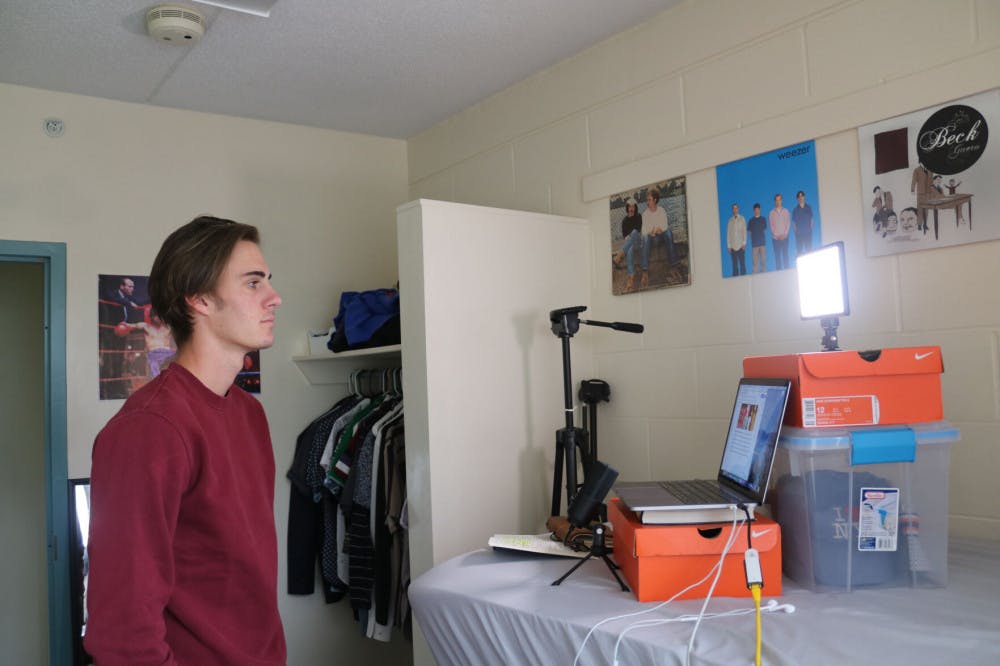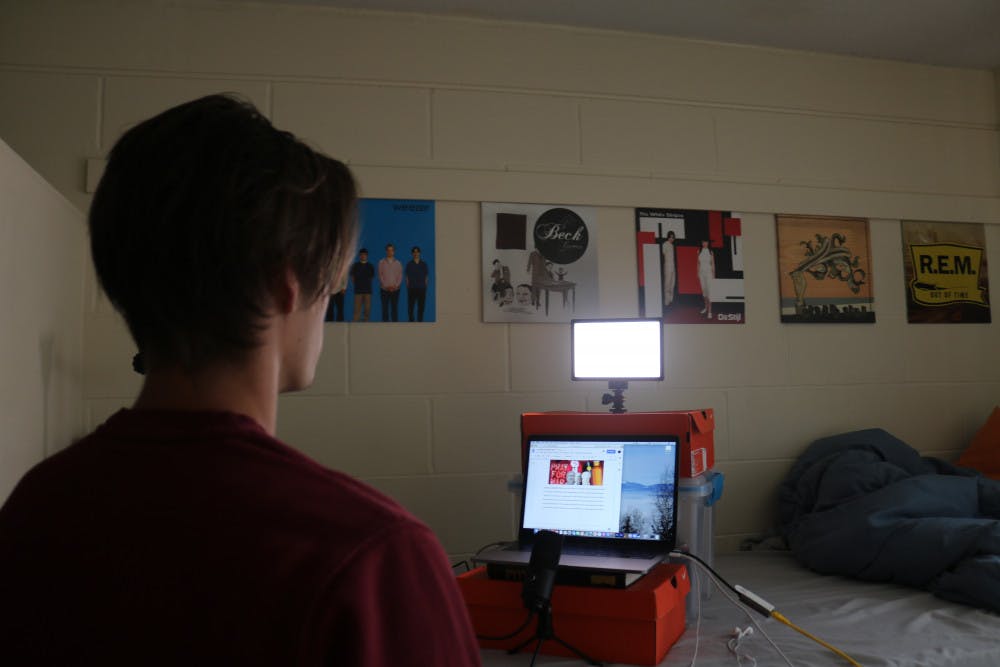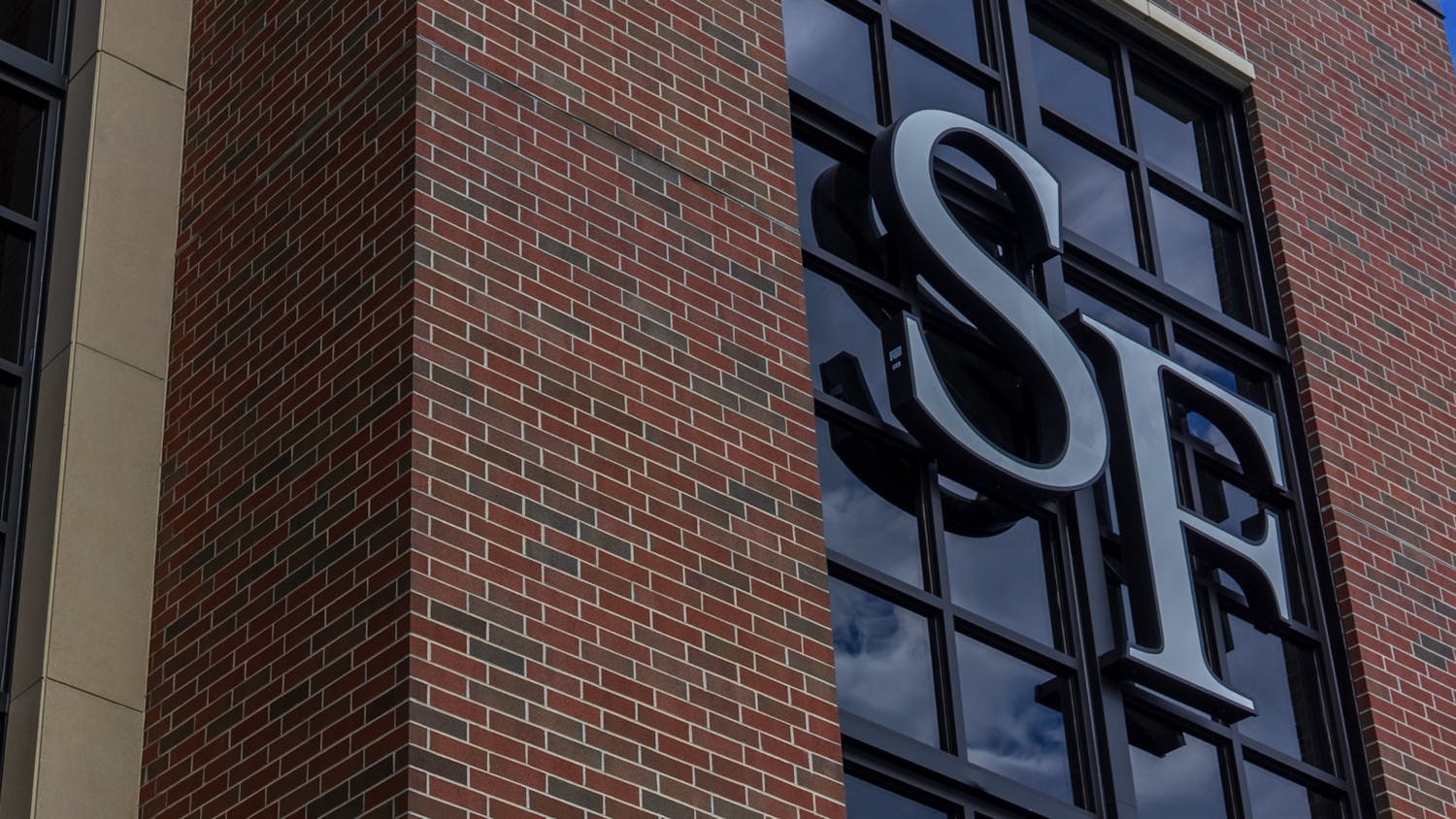How can an actor imagine themself to be in outer space, while their roommate sits across from them and the refrigerator hums loudly two feet away?
The UF School of Theatre and Dance has had to make drastic changes to abide by CDC guidelines.
While many UF students are no longer strangers to hybrid classes, acting students have had to fully embrace flexibility in their schedules. Students may be asked to tune into a Zoom meeting one class and meet in-person with masks on the next.
UF acting professor Ryan Hope Travis has made similar requests of his students during the transition to online acting classes this Fall semester.
His hybrid acting for the camera and acting analysis classes take place on UF stages, outdoors and in the digital sphere, Travis said. Careful consideration and planning by the school’s administration went into the decision to host indoor classes.
“Acting and dancing – it’s a communal experience,” he said. “And it’s from this community of artists that you find your place.”
His smallest class of nine students was assigned the largest studio at the program’s disposal, a 1,526 square foot room behind the Constans Theatre, Travis said. Classes can only be held indoors for a maximum of 90 minutes before students have to leave and let the room air out.
This is because the air in the building circulates every 11.5 minutes, according to an email sent by the school’s administration to faculty over the summer. At the end of the 90 minutes, the class must exit the building for 15 minutes to allow fresh air to run its course.
Travis said that he is aware of this strain on morale that these social distancing policies can have on students in his program, but has been blown away by their resilience.
“Yes, it has its challenges but it's also in the spirit of what artmaking is,” he said.
He recently learned that students of his had been in contact over the summer with one another, hopping into Zoom meetings to have group dialogue separate from class or discuss current social movements.
“It blew my mind,” Travis said. “They were still finding a way to vibe.”
Joseph Meisner, a 19-year-old UF acting sophomore, acknowledged the difficulty of keeping everyone in the School of Theatre and Dance safe this semester. Only half of his class will meet at a time to minimize sustained contact with others.
“Personally and overall it's taken a big hit to our morale because we're just so used to being with each other and we feed off that energy,” he said.
Travis said that his background as a filmmaker came in handy throughout the program’s adaptation to Zoom as a medium. He has nine short films to his name, as well as a feature film, Cocoa in the Dark, in the works.

Props, cameras and wardrobe were shipped to students participating in Remove Before Flight, a play created entirely through Zoom over the summer and directed by Travis and streamed July 23-26. The production, made up of a diverse cast of 10 UF actors, took on a reimagining of social and racial hierarchies with a focus on the criminal justice system.
He edited the cuts of each scene to create a coherent, linear telling of the story.
“Art comes out of a need to address social issues. Art comes out of a desire to help heal,” Travis said. “And the pillar of that is our ability to stay connected. So, when you remove that, artists, we innovate.”
Anna Roman, a 20-year-old UF acting junior who had an acting role in Travis’ Remove Before Flight, echoed this enthusiasm, but also said she’s experienced challenges like not being able to separate home and work and Zoom fatigue.
She, too, feels optimistic about the state of the program. Some of her motivation is derived from seeing famous actors near her age like Alex Wolff and Florence Pugh reading plays over Zoom.
“Everyone's on the same playing field right now and there's so much room to do whatever you want,” she said.
Phia Kallas, a 20-year-old UF dance and acting junior, said dance students who share a building with acting students, are being confined to six-foot squares taped out on the floor while wearing masks.
This not only makes some dance routines that rely on physical contact between dancers impossible but is a struggle for social butterflies like Kallas.
“It’s really hard to see your friend and not be able to hug them,” Kallas said.
Technical difficulties plague the dance program as they do other departments, said Kallas. A momentary buffer could leave a dance student many steps behind in learning a new routine in class.
Like many others at this point in time, Kallas has had to make her social circle smaller but she sees the silver lining in limited contact with others.
“Really cultivating those one-on-one personal relationships has been helpful, too,” she said. “It’s just different.”






